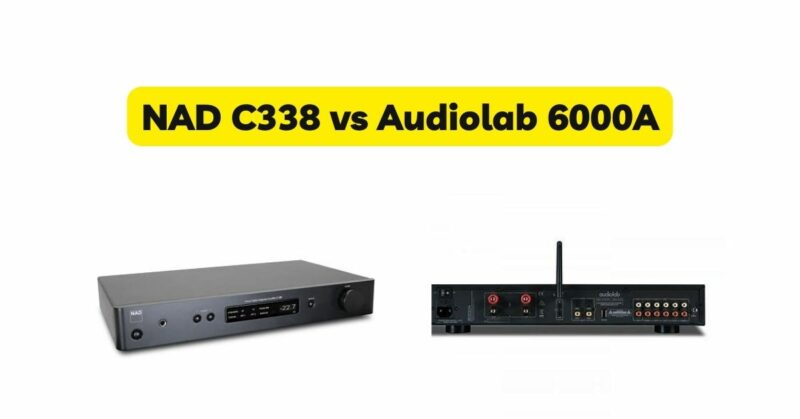When it comes to choosing an integrated amplifier for your audio setup, two popular options often come to mind: the NAD C338 and the Audiolab 6000A. Both amplifiers are highly regarded for their performance and features, making it challenging to decide which one is the better choice. In this article, we will conduct a comprehensive comparison between the NAD C338 and the Audiolab 6000A to help you make an informed decision based on your audio preferences and requirements.
Design and Build Quality:
Starting with design and build quality, both the NAD C338 and the Audiolab 6000A exhibit a sleek and modern aesthetic. The NAD C338 features the brand’s classic minimalist design, with a clean front panel and intuitive controls. On the other hand, the Audiolab 6000A sports a more contemporary look with a slightly larger display and a sturdy chassis. Both amplifiers are well-built and exude a sense of durability.
Connectivity Options:
In terms of connectivity, both amplifiers offer a range of options to cater to various audio sources. The NAD C338 includes built-in Bluetooth for wireless streaming, as well as a phono input for vinyl enthusiasts. It also features multiple analog and digital inputs, including two optical and two coaxial inputs. The Audiolab 6000A, on the other hand, provides similar connectivity options, including Bluetooth, phono input, and multiple analog and digital inputs. However, it also offers a USB input for direct connection to a computer, which can be advantageous for those who prioritize computer audio.
Power and Performance:
One crucial aspect to consider when choosing an amplifier is its power output and overall performance. The NAD C338 delivers 50 watts per channel, which is ample for most home listening environments. It incorporates NAD’s patented PowerDrive amplifier technology, providing dynamic and controlled sound reproduction. On the other hand, the Audiolab 6000A offers 50 watts per channel as well, ensuring a balanced and powerful soundstage. It utilizes Class AB amplification, which is known for its smooth and detailed audio presentation.
Sound Quality:
When it comes to sound quality, both the NAD C338 and the Audiolab 6000A excel in their respective ways. The NAD C338 exhibits a warm and engaging sound signature, with a focus on musicality. It offers a well-rounded audio presentation, with a smooth midrange, detailed highs, and tight bass response. The Audiolab 6000A, on the other hand, delivers a more neutral and analytical sound, emphasizing clarity and precision. It provides a wider soundstage and excellent instrument separation, making it ideal for critical listening and audiophiles.
Additional Features:
Apart from the core functionalities, both amplifiers offer some additional features worth mentioning. The NAD C338 includes a dedicated subwoofer output, allowing you to add a powered subwoofer for enhanced low-frequency performance. It also offers a dedicated headphone amplifier, making it convenient for private listening sessions. The Audiolab 6000A, on the other hand, incorporates a high-quality DAC (Digital-to-Analog Converter), ensuring superior audio conversion for digital sources. This can be advantageous if you primarily use digital audio formats.
Conclusion:
In the end, choosing between the NAD C338 and the Audiolab 6000A depends on your personal preferences and requirements. The NAD C338 offers a warm and engaging sound signature, extensive connectivity options, and additional features like a subwoofer output and dedicated headphone amplifier. On the other hand, the Audiolab 6000A provides a more neutral and analytical sound, a USB input for computer audio, and a high-quality DAC.
Consider your listening preferences, the types of audio sources you frequently use, and your desired sound signature when making a decision. It’s also recommended to audition both amplifiers if possible, as subjective listening experiences can vary. Ultimately, both the NAD C338 and the Audiolab 6000A are excellent choices, and you can’t go wrong with either option when seeking a high-quality integrated amplifier for your audio system.

